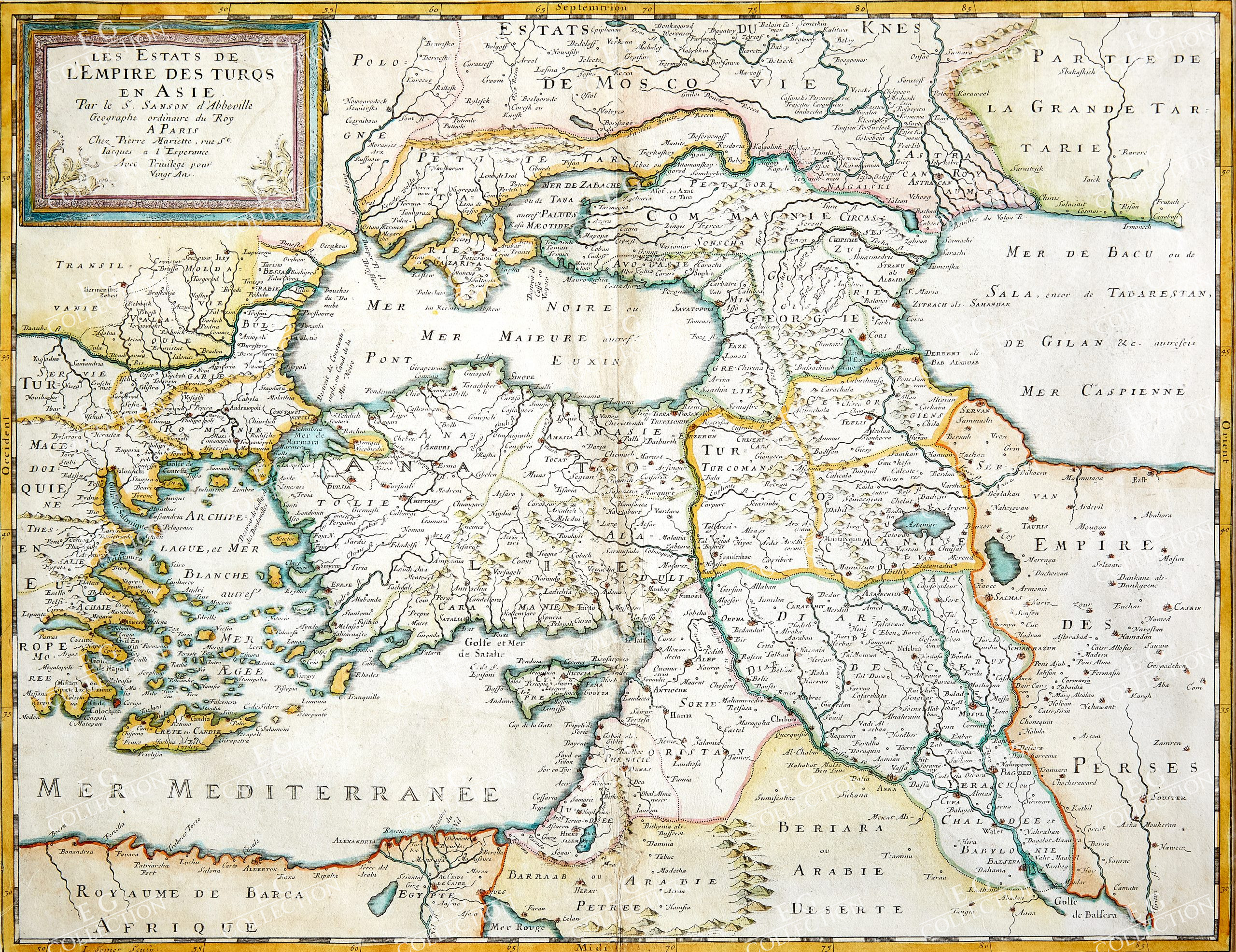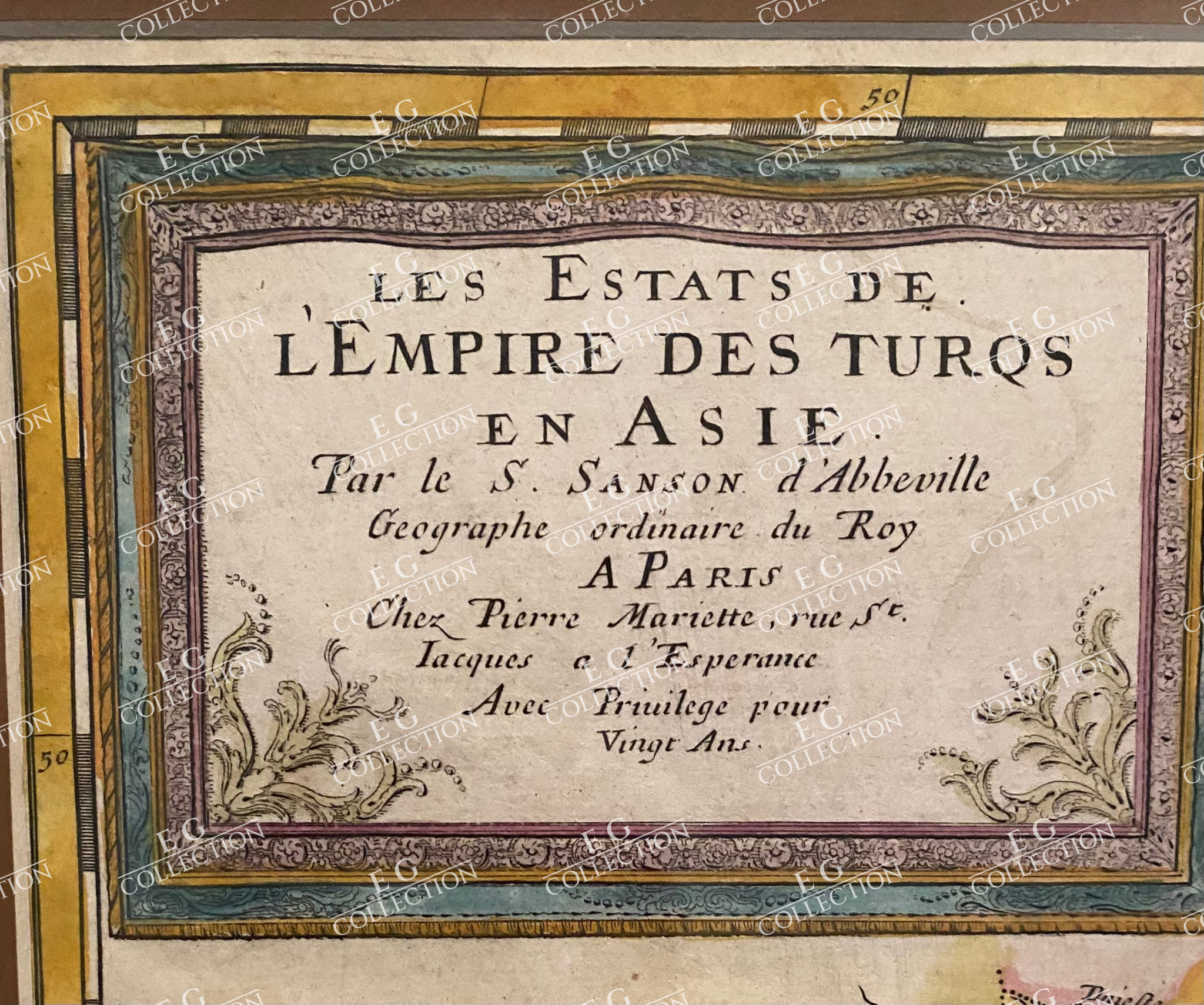SANSON
LES ETATS DE L’EMPIRE DES TURQS EN ASIE
SANSON, S. D’Abbeville
Paris, c. 1650
43 X 58 CM.
Nicolas Sanson’s circa 1650 double-page engraved map of the Ottoman Empire.
The map provides a detailed look at the Turkish Empire in the middle of the 17th Century, extending to cover the Eastern Mediterranean and the western part of the Persian Empire, during the so-called Sultanate of Women.
The map shows the Ottoman Empire shortly after the reign of Murad IV (1612-1640), during with the Ottomans reasserted central authority and recaptured Iraq (1639) from the Safavids. The resulting Treaty of Zuhab of that same year decisively parted the Caucasus and adjacent regions as they were defined in the 1555 Peace of Amasya between the two neighboring empires. The Sultanate of Women (1648-1656) was a period in which the mothers of young sultans exercised power on behalf of their sons. The most prominent women of this period were Kösem Sultan and her daughter-in-law Turhan Hatice, whose political rivalry culminated in Kösem’s murder in 1651. Thereafter, during the Köprülü Era (1656-1703), effective control of the Empire was exercised by a sequence of Grand Viziers from the Köprülü family. The Köprülü Vizierate saw renewed military success with authority restored in Transylvania, the conquest of Crete completed in 1669 and expansion into Polish southern Ukraine, with the strongholds of Khotyn and Kamianets-Podilskyi and the territory of Podolia ceding to Ottoman control in 1676.
Nicholas Sanson (1600-1667) is considered the father of French cartography in its golden age from the mid-seventeenth century to the mid-eighteenth. Over the course of his career he produced over 300 maps; they are known for their clean style and extensive research. Sanson was largely responsible for beginning the shift of cartographic production and excellence from Amsterdam to Paris in the later-seventeenth century.
Sanson was born in Abbeville in Picardy. He made his first map at age twenty, a wall map of ancient Gaul. Upon moving to Paris, he gained the attention of Cardinal Richelieu, who made an introduction of Sanson to King Louis XIII. This led to Sanson’s tutoring of the king and the granting of the title ingenieur-geographe du roi.
His success can be chalked up to his geographic and research skills, but also to his partnership with Pierre Mariette. Early in his career, Sanson worked primarily with the publisher Melchior Tavernier. Mariette purchased Tavernier’s business in 1644. Sanson worked with Mariette until 1657, when the latter died. Mariette’s son, also Pierre, helped to publish the Cartes générales de toutes les parties du monde (1658), Sanson’ atlas and the first French world atlas.
$ 1.700,00
1 in stock





 No products in the cart.
No products in the cart.